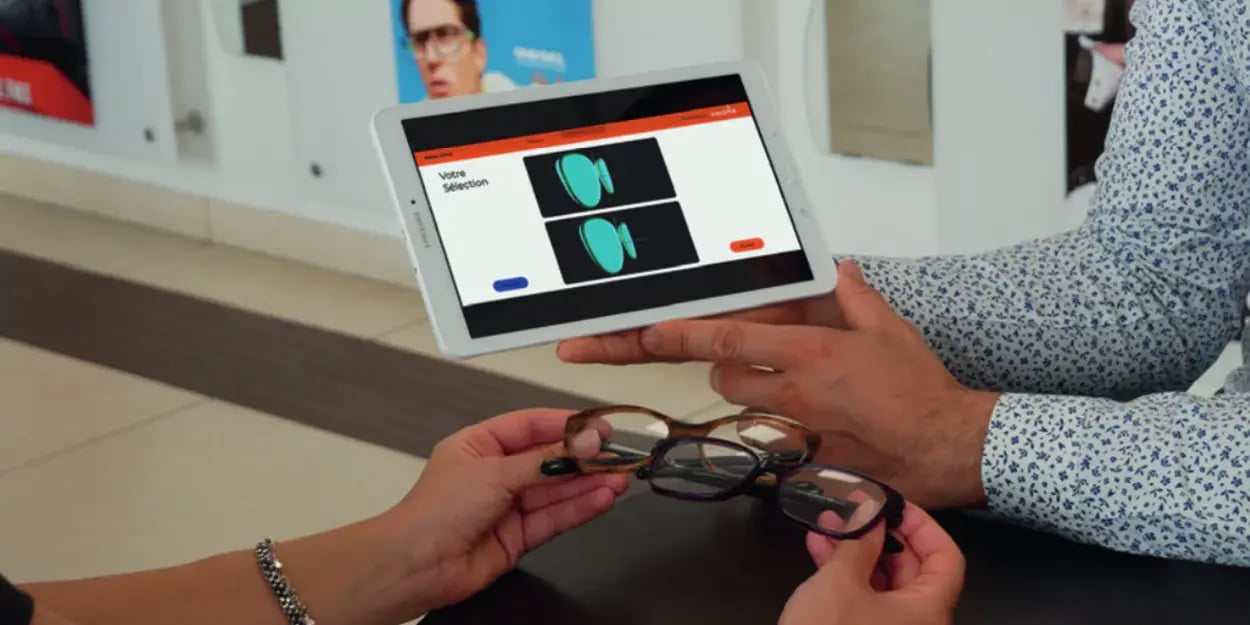Case Study: ROI on In-house Finishing
In this article, Dr. Kristopher May shares how implementing an in-house finishing lab with Briot Couture significantly boosted his practice’s profitability and impressed his patients. Interested in doing the same? Dr. May walks you through the five steps you need to take in order to set up your own in-house finishing lab, and it's easier than you might think!

It's difficult to stay profitable in private practice. We are trying to differentiate ourselves from other offices, online optical retailers, and corporate opticals. Plus, we want to be able to provide a high level of customer service. In-house optical finishing might be the answer to many of the challenges private practitioners face. Despite all the advances in patient care technology in recent years, patients still perceive same-day glasses as a highly desirable and advanced service.
Starting in-house finishing is now easier and more accessible than ever before. With the right approach, training, and equipment, eyecare practices can reclaim control, offer standout services, and boost profitability. In my 5-doctor, 3-office practice, we have always had a finishing lab. You should, too.
Why Make the Move to In-house Finishing?
Adding or updating existing lab finishing equipment will:
- Reduce your lab bill
- Increase profits by preventing Rxs from walking
- Differentiate you from other practices
- Satisfy patients with same-day or next-day glasses
Practitioners may believe they cannot edge in-house because a high percentage of their patients use managed vision care plans (VCPs). In my experience, you can afford to edge in-house, even with large numbers of VCP patients.
Others cite the additional time required to edge in-house. In fact, we routinely complete jobs at our office in less than 10 minutes from when the job arrives in our lab. The cycle time for cutting a polycarbonate lens, including edge finishing and back side bevel is about 3 minutes. We have no need to store the job once it is complete, call the patient to return to the office for pick up, find the job when the patient arrives, and dispense. It is already done!
How to Start?
Here are five steps to follow in order to start in-house optical finishing in your practice:
- Research
- Hire an optician
- Purchase equipment
- Train optician and/or staff
- Break up with your outsourced lab
Step 1: Research
Congratulations, you completed this one. This step is already done because you’re reading this article.
Step 2: Hire an optician?
This step is not what it used to be—you don't need to hire an advanced optician to edge in-house. Technological advances have revolutionized the knowledge and experience needed by staff operating the equipment. Thank goodness—because hiring is harder than it's ever been. However, today’s equipment is approachable by many members of your staff. If it's a busy Saturday, more than one person can edge jobs, even if your “optician” is off that day.
Hiring an optician is not necessary. But training the right people who are already on staff is important.
Step 3: Purchase equipment
Finding equipment that required little space was important for our clinic. We opted for Visionix Briot Couture due to its reduced footprint and power requirements for manufacturing. It offers game-changing precision and efficiency, enabling faster turnaround times and improved patient experiences.
The financial analysis shows a positive return on investment, with a potential margin increase of almost $280,000 over a 60-month period.
Briot Couture significantly increases capture rates and profitability compared to traditional methods. The equipment’s advanced features, such as TrueFit bevel measurement and 3D tracing, enable precise lens centering and frame fitting, making it easy to use and reducing the risk of errors. It can handle hydrophobic AR coated lenses efficiently, reducing slippage and optimizing cycle time. It offers dual visualizations, allowing opticians or staff to show patients the difference between lens materials and designs. The system’s speed and precision enable faster workflow, saving staff time and enhancing customer service, ultimately increasing profitability.
Our financial analysis showed a positive return on investment with a payback period under 24 months and increased margin potential.
Step 4: Train optician and/or staff
The right equipment partner will take care of this step for you. In our case, Visionix offered training to all staff members who would be operating the equipment.
Step 5: Break up with your outsourced lab?
This step isn’t necessary unless you want to do it. Your relationship with your lab will of course change—in a good way—when you add in-house finishing to your practice.
Your lab will still be part of your practice, albeit with lower invoices. The lab will still provide you with needed information, and you will continue to purchase wholesale lenses and finished lenses that your staff will complete.
Communicating with patients
One of my mantras is, “If you don’t tell them, they won’t know.” I still have to constantly remind myself of this as patients we have treated for years express surprise that we can make their glasses while they wait.
Unless you specifically tell every patient, every time, that your office has this capability, they won’t know or remember.
What’s more, all marketing materials must include this information as well. That means in-office marketing (point-of-purchase notices, posters in the reception and optical areas, information in exam rooms) as well as external marketing (social media, your website, Google listing) should mention your practice’s ability to provide glasses quickly.
Making a pair of glasses while the patient waits is amazing. But having the ability to make a second pair while the patient waits is an interesting moment to reshape how they view their insurance plan materials as well as how they look at online ordering.
The fastest way for our practice to lose out is the patient saying, “I just want to take my Rx to the place my insurance told me to go to, then order a second pair online.” We didn't spend anything, we didn't make anything, and the future looks very bleak. But it is completely different when we can elevate the importance of staying with our practice by explaining our ability to make same-day glasses. I have found that patients are not as impressed by our OCT as much as they are when they find out we can do something for them right now.
As a team, we are committed to making sure that we are communicating what we can do to our patients. We know what we have in stock and what can be here tomorrow or in 2 days. It’s now a much different conversation with patients about their insurance job being back in 5 to 7 working days.
Ensuring that patients understood we could meet their optical needs today changed their perception of our practice, and that different attention point is massive.
Standout Features of Briot Couture
- Virtual 3-D lens simulation
.png?width=333&height=207&name=Briot-COUTURE-3D-COMBO-medium%20png%20(1).png)
- TrueScan tracing for high-base frames
- Free shape modification, correction, and repair
- Wavefront-based technology
- TruFit bevel program
- Angular drilling (0 degrees to 30 degrees)
- Internal databases
- Touch-screen interface
- Remote updates
- Torque Management Software to reduce slippage

Kristopher May, OD, FAAO
Kristopher A. May, OD, FAAO is a graduate of Southern College of Optometry and completed a residency in ocular disease as well as his fellowship with the American Academy of Optometry. He served as center director for West Tennessee Eye Care and team eyecare provider for both the Memphis Grizzlies and the St. Louis Cardinals Triple-A affiliate Memphis Redbirds. Kris now owns a group private practice with three offices in north Mississippi. He serves as adjunct and guest faculty at Southern College of Optometry and co-chair of the Mississippi Optometric Association Legislative Committee.
This article originally appeared on ODwire.org in October 2025: https://www.odwire.org/community/threads/case-study-roi-on-in-house-finishing.172593/
**Medical procedures, case studies, and practices mentioned in this content may vary based on regional standards, local regulations, and the discretion of providing healthcare professional. What may be considered appropriate and ethical in one country may differ in another.
